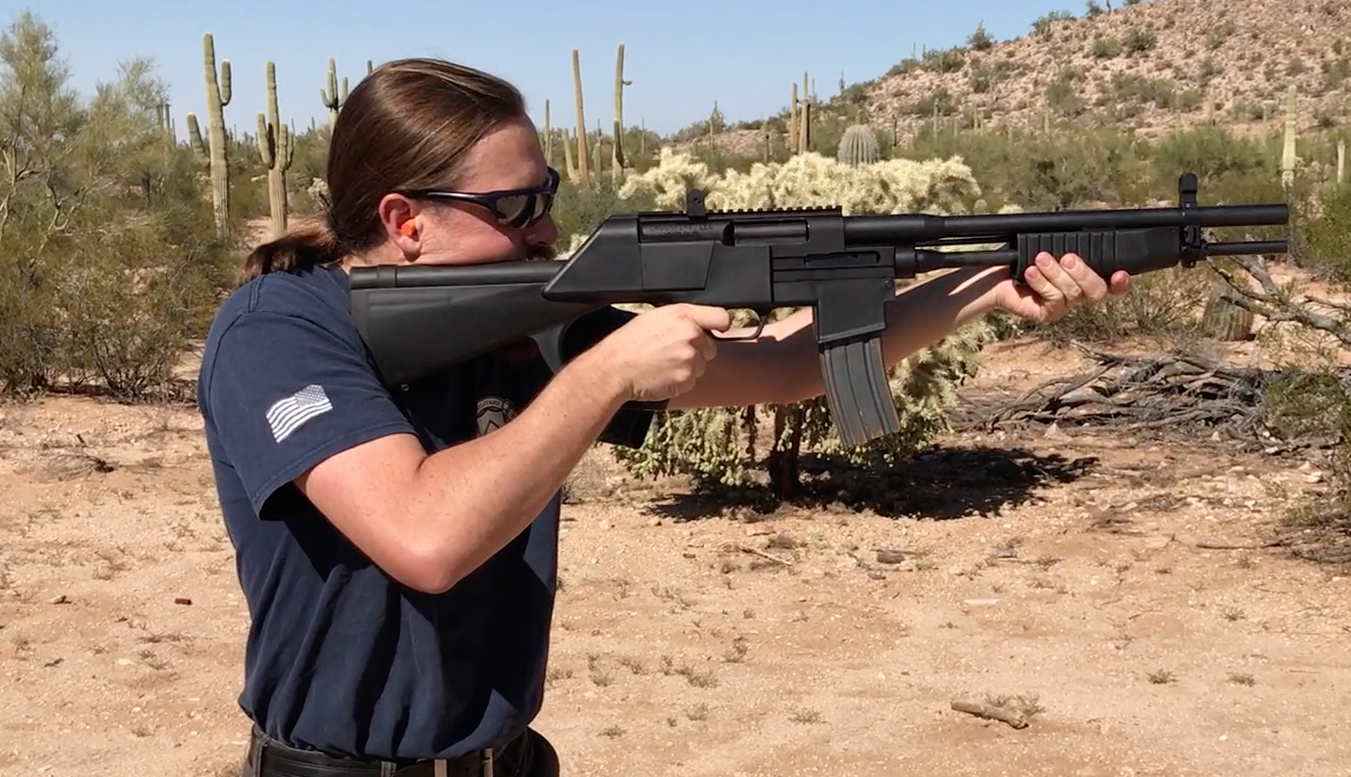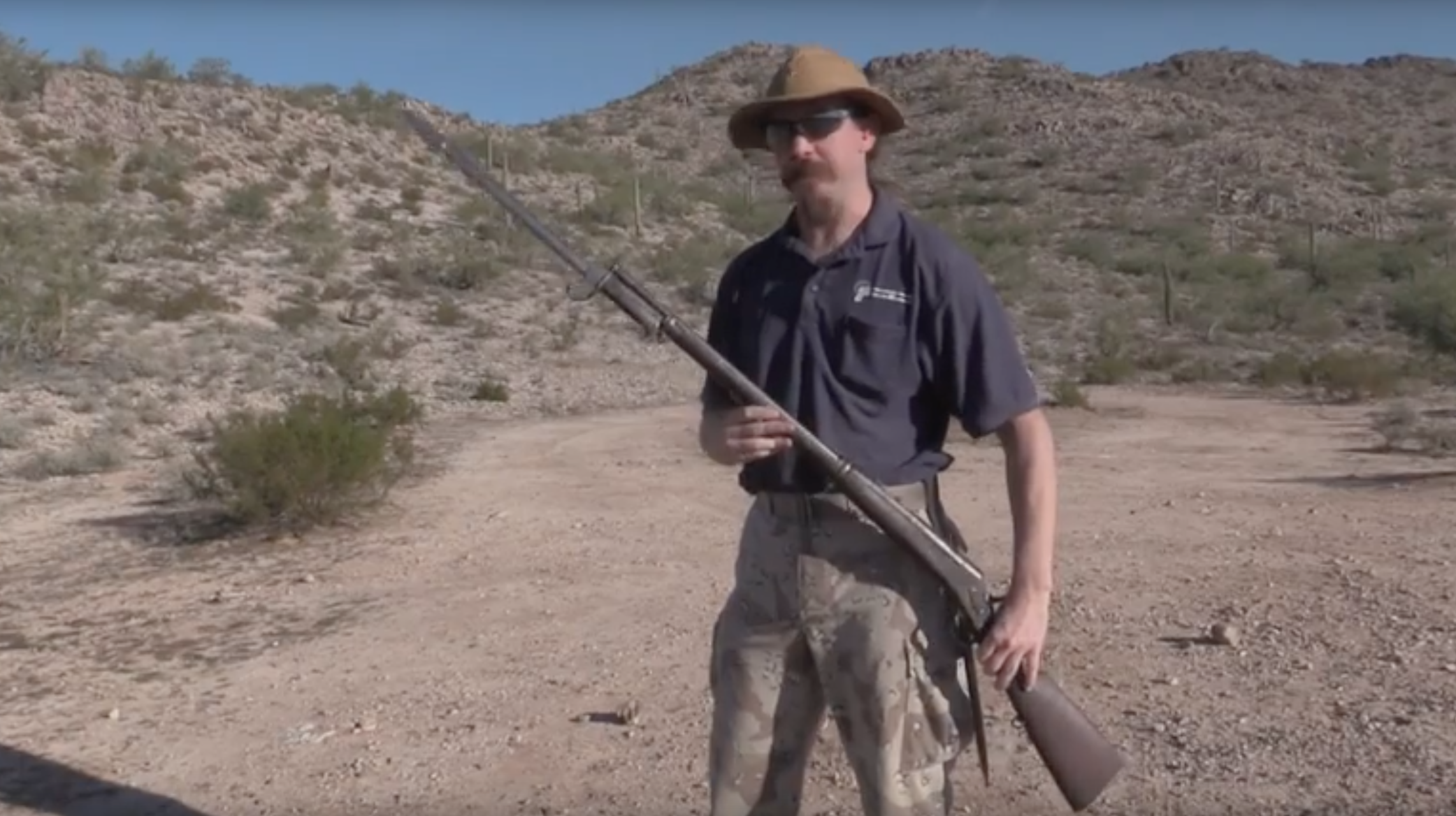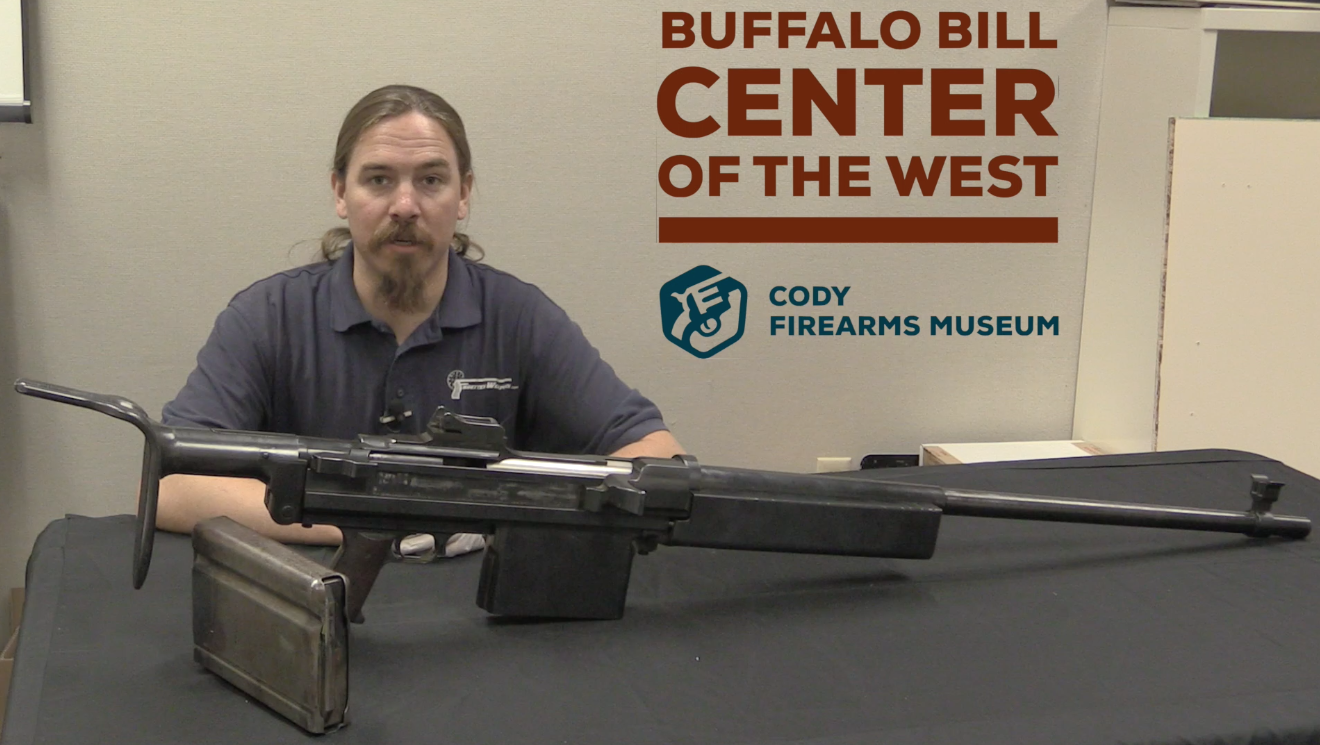The Professional Ordnance Carbon-15 was developed during the assault weapons ban in the United States as a way to market a pistol version of an AR15 action without exceeding the weight limit imposed by legislation. While Olympic Arms achieved this goal through extensive skeletonization, Professional Ordnance did it by using polymer (not woven carbon fiber, as the name implies) for the upper and lower receivers. What we are looking at today, however, is the full size rifle version of this weapon that was also produced.
With a very thin barrel and polymer upper, lower, and buttstock, the Carbon 15 is an exceptionally lightweight rifle – it weighs just 4 pounds unloaded. This could have made a compelling rifle were it not for the numerous reliability and durability problems that dogged the guns. In addition, the bolt and several other parts were made to proprietary designs and not interchangeable with standard parts. Professional Ordnance folded around the end of the assault weapons ban, and its assets were purchased by Bushmaster, who would continue to market guns under the Carbon-15 name but not in the proprietary and super-light configuration of the Professional Ordnance production.




Because they are so light, the Carbon 15 has a noticeably greater recoil impulse to the shoulder compared to a lightweight Colt.
The hand guard has no heat shield, so it starts to get very warm very quickly.
The muzzle device has a quick detach feature, as the muzzle is not threaded. Grasp the knurled surface of the device near the barrel and pull forward, it is a separate sleeve held reward by spring tension, so after the sleeve moves forward about half an inch the entire muzzle device is freed and pops straight off of the muzzle.
In 1999, these were quite expensive rifles, selling for $1,000 wholesale.
“numerous reliability and durability problems that dogged the guns”
Typical outcome if you want make design light too much
“it weighs just 4 pounds unloaded”
That is 1,8 kg in metric if I am not mistaken.
9А-91 is also 1,8 kg heavy:
https://en.wikipedia.org/wiki/9A-91
and have not problems with reliability as far as I know. However it has shorter barrel and metallic stock, but on the other hand it fired 9×39 cartridge which is dimensionally bigger.
However Russian effort for “light” avtomat started much earlier, see ЛА-2 (by А.И.Нестеров) photo here:
http://www.dogswar.ru/oryjeinaia-ekzotika/strelkovoe-oryjie/5872-eksperimentalnye-i-o.html
(1st table, 1st row, 1st column)
made in 1961, weapon mass 2,15 kg
With introduction of new 5,45-mm it was decided to exploit possibility of creating small avtomat, competition started in 1973 and was codenamed «Модерн», requirement were as follow:
mass no more than 2,2 kg
length no more than 750 mm / 450 mm (stock extended/collapsed)
sights scaled to 500 m
one of competitors was TKB-0116, which has description in English here:
http://tonnel-ufo-english.tk/weapon/stechkina-tkb-0116.php
It mass with 20 round magazine was 2,31 kg (although 30 round magazines from AK-74 will also be accepted), interestingly unlike most Soviet avtomat it used short-recoil(rotation) principle – in this regard it was similar to KPV and KPVT.
Eventually AKS-74U was adopted, main reason was high commonality with AK-74.
A different perspective on AR-15 pistols… they seem to fall into two categories.
First are the ones that are actually trying to be pistols — the ones with 7″ barrels, non-standard recoil spring/buffer arrangements to reduce or eliminate the long buffer tube, and so on. Of course, anything trying to meet the ’94 AWB’s requirements falls into this category. And I agree with Ian that these are basically range toys, and I’m not particularly into them, either. (Of course I don’t begrudge anyone who does find them interesting.)
The second category, though, are sometimes called “poor man’s SBR”, and that’s exactly what they are — a way to avoid the legal category of an SBR (short barreled rifle) as defined by the NFA*. These guns, with 11-14.5″ barrels, and standard carbine-length buffer tubes, look and handle a lot like a Colt Commando or M4, and are legitimate weapons for home defense — they have the short length to easily negotiate hallways and doorways, and with a cheek weld on the buffer tube, shoot very nearly as well as rifles. I’m not saying they’re the best weapon for home defense (certainly a genuine SBR with the buttstock is a better choice for those willing to tolerate the tax and delay of an NFA item, and there are good arguments for the shotgun and handgun as well), but they’re certainly a contender; a serious choice of weapon subject to legal considerations, not just a range toy.
* For those unfamiliar with US gun laws, the NFA (National Firearms Act) is one of two main bodies of nation-wide law concerning firearms. The GCA (Gun Control Act) covers “ordinary” guns (rifles, handguns, etc.) that you can walk into a gun store and buy. The NFA covers machine guns, short barreled rifles, short barreled shotguns, silencers, grenades, and the like. In general, to buy NFA-regulated items or to make them from non-regulated items (e.g. swapping to a short barrel), you have to pay a $200 per item tax ($5 per item on some things), and the paperwork associated with that tax takes (depending how busy they are) 3 months to a year to go through, during which you can’t take possession of the item you’ve bought. For some people, $200 and 6 months is a hurdle they’ll never put up with; for others, it’s no big deal.
One caveat for people not familiar with the NFA.
As of May 1986, no more machineguns may be registered for private citizens to possess. Only guns that were registered before the cut off date are available (which is why a Sten gun costs thousands of dollars). Now, you can go and buy a “pre-May transferrable” even if you weren’t born until the 1990s — but they are very, very, expensive — on top of the NFA tax and hassles. (Prices didn’t really begin to get stupid until the internet, when people who thought machineguns were totally banned found out they were just very restricted. Now there are investors who buy MGs solely for the steadily increasing value that far outpaces the rate of inflation.)
This quirk in the law only applies to *machineguns*, however — all other categories of NFA guns can still be made and registered. And you still cannot (as a private citizen) possess any NFA item that was *imported* after 1968.*
* Although if you had one as a sole propriator NFA dealer, you can keep your imports – called, in the business, “dealer samples” – after you give up your license and retire from the NFA business. However, you still cannot have any MGs that are labelled as “post-May” guns (imported after the May 1986 closing of the machinegun registry), only any “pre-May” MGs you may have. Guns other than MGs are sometimes called “pre-May” if they are post-1968 imported “dealer samples” o identify them as things a retired dealer can keep, even though only MGs are technically subject to “post-May” restrictions. “Pre-May dealer sample” machineguns cost nearly the same as the fully transferable types available to private citizens…
“ones that are actually trying to be pistols”
I am wondering why AR-15 are used for that, when AR-18 seems to be better fit for that purpose – no need to eliminate the long buffer tube.
As interesting attempt to make compact 5,56 rifle, I want to point MKS:
http://modernfirearms.net/assault/swed/interdynamics-mks-e.html
Meet creator – Mr.G.Kelgren, currently owner of Kel-Tec Arms
https://www.keltecweapons.com/
The buffer only weighs 49 grams (or 1 5/8 ounces). That seems very light. Is it possible that Professional Ordnance made the buffer too light in an effort to keep down the overall weight of the rifle? Could an incorrect buffer weight be the cause of the rifle’s reputation for breaking parts?
Interesting. The weight of an ordinary AR-15 complete bolt carrier group is 325 grams (11.5 ounces). The weight of the Carbon 15 complete bolt carrier group is 291 grams (10.25 ounces).
I have one I am trying to get more reliable. The buffer is very light with ball bearings inside (like a dead-blow hammer). It cycled alright for a while (200 rounds) but now stovepipes a lot …
The cure may be a heavier buffer or less gas.
So, it’s waiting for a machinist to make a heavier buffer and a gas regulation system.
It’d make a dandy pack rifle for walking around the hills.
I bought one of these used a couple years ago and still own it. I still find it funny to watch people’s faces when i hand it to them for it is incredibly light, it honestly feels like a toy.
I did have a few reliability issues, nothing more than an occasional jam… I think the feeding issue was caused by some old mags. I actually had some know-it-all ex-marine tell me that he thought the gun was completely unsafe and wouldn’t recommend firing it because he had “never seen an AR like it” and “it appeared to be missing parts.”
Not that I plan on selling it but I was wondering if anyone foresees these being worth anything in the future?
I have both the pistol & carbine and after bushmaster bought them out I sent both to bushmaster for their upgrades, although I don’t shot them as often as I would like I can’t think of getting rid of them. I would say that between the two round count might be 1000 total
I have one of these rifles built in lake Havasu city AZ. I a bolt and flash hider. Bolt is cracked and flash hider is missing
I have the rifle I purchased new around 1998-9, before the reputation became widespread. I began to have some stove-piping issues and double feed. I contacted the company, then in AZ. They were quite compliant, and had me return the rifle. They returned it to me a few weeks later with a newly manufactured receiver, after determining the original had a crack.No charge. It has given me no trouble since, and I find it a very enjoyable shooting experience. Recoil feels “different” somehow than a conventional AR, but it isn’t uncomfortable at all.Zero muzzle rise due to the brake. Handling the rifle is a joy because of the light weight and I like the balance point.I have removed the stock many times with no issues.I also replaced the Hogue (very heavy and a weird angle) replacing it with an aftermarket grip.There is a buffer tube separate from the stock. This feature reduces the overall length significantly for carrying in a pack. My understanding is: most receiver cracks develop due to dropping the rifle with a magazine inserted. The cracking happens when the magazine gets slammed into the receiver if it hits the ground. Much like if one pounded the magazine into the receiver.I suspect there are tabs built into the receiver that help hold the rail in place, although I have never had the courage to remove it.The rail feels solidly mounted.I have had magnification scopes and red-dots on it, with no issues. I’ll admit I have considered mounting a sling to the rail, but reconsidered the notion.